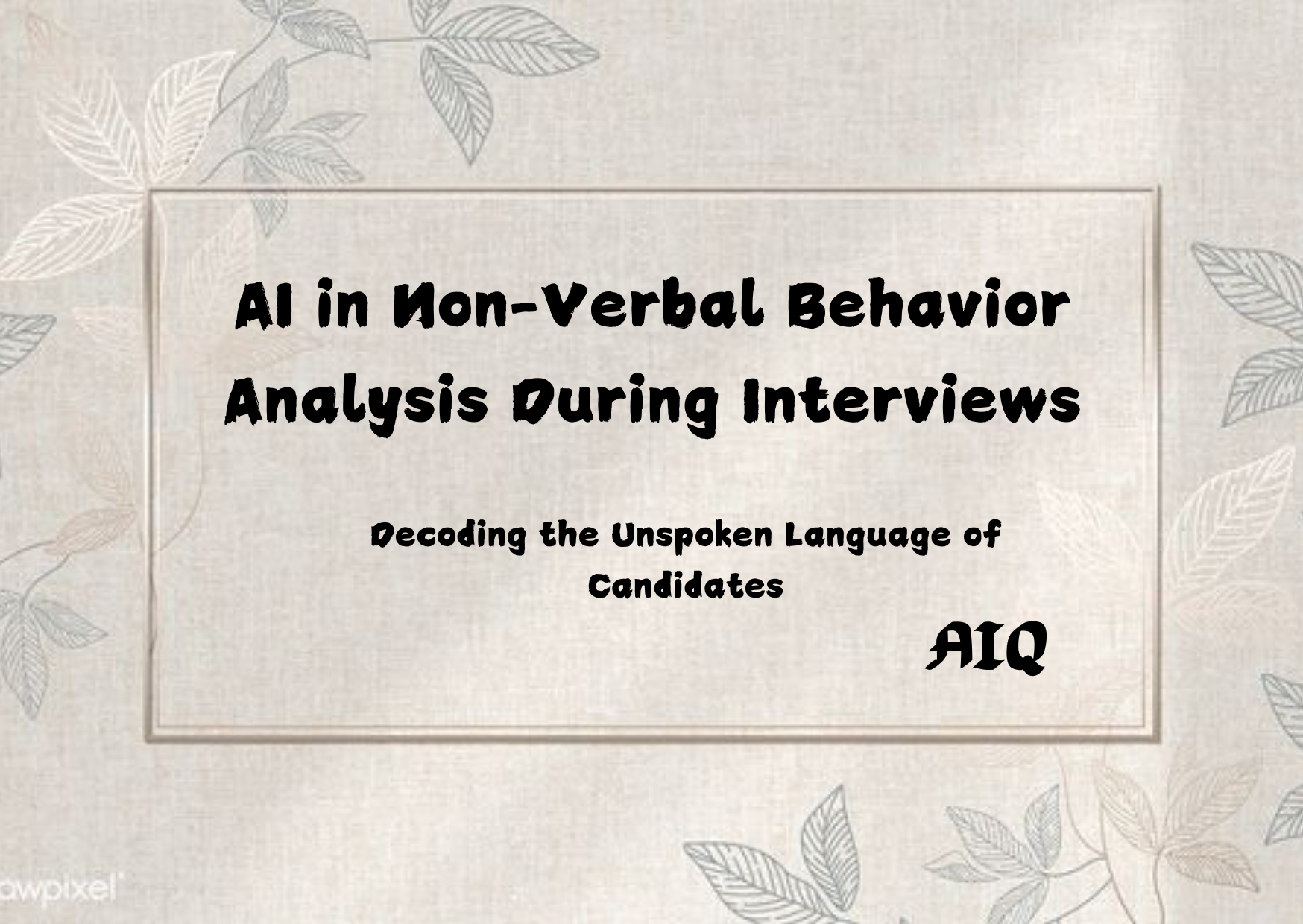In the intricate dynamics of an interview, what candidates do, not just what they say, can reveal critical insights into their character and fit for a role. Non-verbal behavior—ranging from body language to eye movements—conveys a wealth of information that complements verbal communication. Artificial Intelligence (AI) is now adept at analyzing these non-verbal cues, offering a deeper understanding of candidates’ responses and emotions. This article explores the role of AI in interpreting non-verbal behavior during interviews, enhancing the assessment process with a nuanced perspective.
The Power of Non-Verbal Communication
Non-verbal cues are an essential aspect of human interaction, often accounting for the majority of the message conveyed in face-to-face communication. In interviews, these cues can indicate a candidate’s confidence, honesty, and emotional state.
AI’s Role in Non-Verbal Behavior Analysis
1. Facial Expression Recognition
AI can analyze facial expressions to identify genuine emotions and reactions, distinguishing between a candidate’s practiced responses and their instinctive feelings.
2. Eye Movement Tracking
AI can track eye movements to assess a candidate’s attentiveness and credibility, as well as to detect potential signs of deception or discomfort.
3. Body Language Interpretation
AI can interpret body language for signs of confidence, openness, or defensiveness, providing insights into a candidate’s comfort level and attitude during the interview.
4. Gesture Analysis
AI can analyze gestures for their meaning and intensity, offering additional context to a candidate’s verbal responses and thought processes.
5. Posture Assessment
AI can evaluate a candidate’s posture to understand their level of engagement and respect for the interview process.
6. Proximity and Spatial Dynamics
AI can assess the use of personal space and spatial dynamics between interviewers and candidates, which can indicate social comfort and interpersonal skills.
7. Consistency Checks
AI can check for consistency between verbal and non-verbal cues, ensuring that a candidate’s words are aligned with their non-verbal signals.
8. Cultural Sensitivity
AI can be trained to recognize and respect cultural differences in non-verbal communication, ensuring fair and unbiased assessments.
The Future of AI in Non-Verbal Behavior Analysis
As AI technology advances, its ability to analyze non-verbal behavior will become more nuanced and context-aware. Future developments may include integration with virtual reality for more accurate body language interpretation and the use of biofeedback sensors to assess physiological responses.
Conclusion
AI’s integration into the analysis of non-verbal behavior during interviews is a significant advancement for the recruitment industry. It offers a more comprehensive, empathetic, and insightful approach to candidate assessment, ensuring that non-verbal intelligence is considered alongside verbal communication. As we continue to integrate AI into this aspect of the recruitment process, we move towards a future where the unspoken language of candidates is as richly understood as their spoken words, leading to more well-rounded and accurate hiring decisions.
